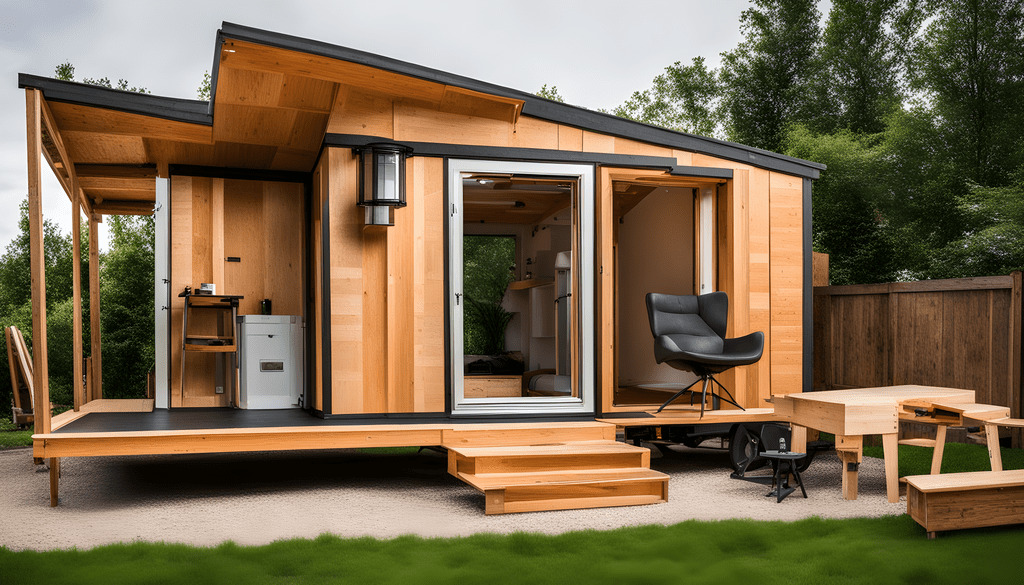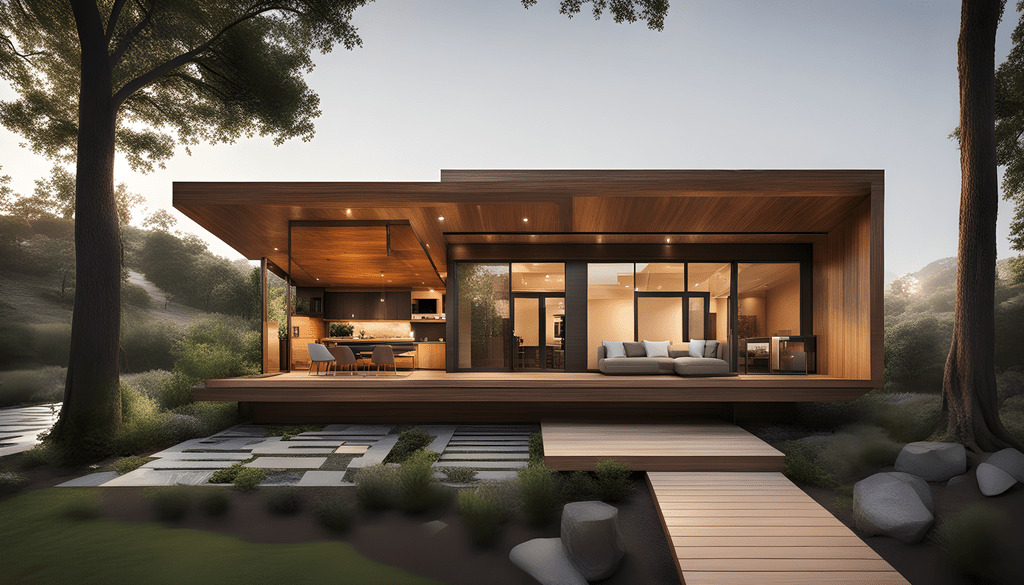It’s critical to comprehend what a tiny house actually is before you start creating one. A tiny house is a compact, fully furnished home that usually has between 100 and 400 square feet. A kitchen, bathroom, living room, and sleeping rooms are frequently included. A well-designed tiny house can provide the same level of comfort and utility as a larger home, despite its smaller size. So, come along as we explore the fundamentals of tiny house construction.
What is a Tiny House?

A tiny house is a simple, effective living arrangement that stresses minimalism. Usually constructed on a trailer or foundation, it allows people to live a more basic lifestyle with fewer belongings and less of an impact on the environment.
The creative and innovative process is crucial to the design of a tiny dwelling. Architects and builders are continuously coming up with innovative ways to optimize space and include multipurpose components in their designs. A tiny house is designed to make the most of every available space, from hidden storage spaces to movable furniture.
Moreover, there is no restriction on the architectural style of little houses. Your small house can be tailored to fit your unique style and lifestyle, whether you want a sleek, contemporary look or a warm, rustic cabin vibe.
Benefits of Living in a Tiny House
Tiny house living has several advantages. The reduced cost of living is one of the main benefits. In comparison to conventional dwellings, tiny houses are frequently far less expensive to construct, maintain, and heat. Because of its smaller size, it will cost less to build, require fewer resources, and have lower utility expenditures.
Tiny dwellings are also a more sustainable housing option because they utilize less resources. Tiny house residents can lead more environmentally friendly lives and contribute less to environmental damage because their ecological impact is less. To further lessen their influence on the environment, many tiny home enthusiasts also include sustainable energy sources, such as solar panels.
Additionally, living in a compact house allows you to live a minimalist and clutter-free lifestyle, which can lower stress and raise happiness. You can establish a simple and peaceful living space and concentrate on what really important by downsizing and getting rid of needless belongings.
Furthermore, tiny house living promotes a closer relationship with the natural world. Tiny house residents frequently spend more time outside taking in the scenery and participating in outdoor activities because their internal space is restricted. The benefits of being close to nature can extend to one’s physical and mental health.
Legalities and Zoning for Tiny Houses
It’s imperative that you learn about local laws and zoning restrictions before you start with your tiny house construction. Despite their increasing popularity, tiny homes are not subject to all municipal restrictions.
Make sure you build on a foundation or if tiny houses on wheels are permitted by your local zoning restrictions. There can be limitations in some places on the minimum square footage needed for a house or the kind of foundation that can be used. Knowing these rules will help you decide what building codes to abide by and where you can lawfully place your tiny house.
It’s also critical to take into account the utilities and infrastructure that are offered in your preferred area. When deciding where to put your tiny house, accessibility to sewage, electricity, and water infrastructure may be important considerations. Some places would force you to connect to the utilities already in place. Others might let you live off the grid as long as you have backup plans like composting toilets and rainwater collection.
You may make sure that the procedure of building and residing in your tiny house construction is easy and hassle-free by completing extensive study and comprehending the legalities and zoning restrictions.
Conclusion
Gaining an understanding of the fundamentals of building tiny houses exposes an intriguing fusion of sustainability, ingenuity, and pragmatism. Because it makes effective use of available space and resources, the minimalist dwelling concept has grown in popularity. To make the most of every square foot, tiny house building entails meticulous planning, the incorporation of multifunctional materials, and the application of creative design concepts. The use of environmentally friendly materials and energy-efficient solutions demonstrates the emphasis on sustainability, which is in line with the growing interest of people worldwide in minimizing environmental effect.
Furthermore, creating a tiny house frequently promotes a hands-on approach, enabling people to actively take part in the building process. This results in a stronger bond between the occupant and their living environment as well as a sense of success. The trend toward tiny house living challenges traditional ideas of homeownership. Also, it is a reflection of a societal shift towards simpler, more purposeful lifestyles.
To sum up, learning the fundamentals of tiny house construction reveals a dynamic nexus between practicality, ingenuity, and environmental awareness. As the housing trend develops further, it is evidence of the adaptability and creativity of people who are looking for a more intentional and sustainable way of living.
Also read: How to choose the ideal furniture?
